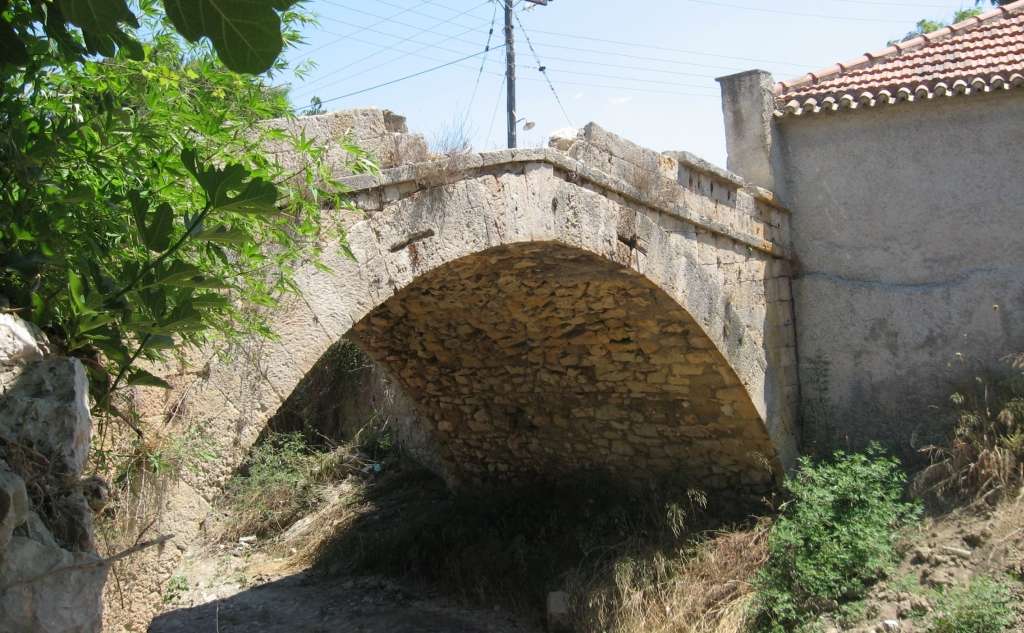The "Kapodistrian" arched, stone Bridge

A river crosses Methoni from north to south, whose bed was full of water many years ago. It is the bed of the old river Siloso (or Limar) which is referred to by foreign travellers of past centuries.
The bridge is 50 meters away of the "Kapodistrian School", in the East and has been declared a historical listed worth preserving monument (Government Gazette 1351 / Β / 17-10-2001).
It is estimated that this bridge dates back to 1890, although recent evidence proves that it was built in 1862.
It is a stone vaulted structure about 10m long and 5.20m wide with a semicircular arc that has an opening of about 8m and is supported by rocks on both banks. Because the bridge is elevated with respect to the natural altitude of the surrounding ground, two stone shoring walls have been built to the north and to the south side of the two bases, which keep the artificial bed for better access and reinforce the slopes.
The morphology of the bridge and the stone used create a harmonious image in the general historical aspect of the settlement. On both sides of the bridge, the shape of the arch is emphasized with uniform, slightly splintered chipped stones which protrude about 2cm. At two points on both the north and south sides of the bridge the arches are reinforced with iron clips. Above the arch, the level of the easy surface of the bridge is highlighted by a 10cm wide strip that protrudes even more, about 5cm from the front. The guardrail was built with large rectangular stones and with thinner ones (about 10 cm thick) in the upper row as its finishing part, which also protrude from the facade.
Information from the "Methoni Castle Friends Association"



